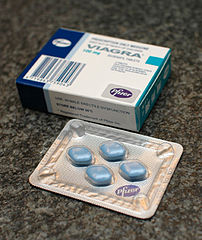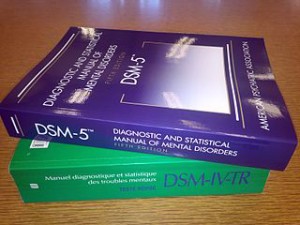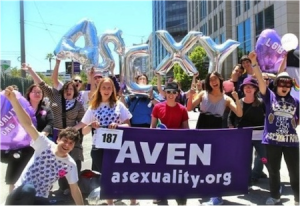 Pharmaceutical companies have been working for years in order to secure FDA-approval for Flibanserin, a drug intended to treat female desire disorders. Recently, there have been a number of new developments in the Flibanserin saga, involving drug companies, the FDA, feminist activists, and the media, which I analyze in this post. Here’s a quick preview of my judgment on each of these actors: pharmaceutical companies = profit driven (what else?); FDA = differential treatment of drugs for men vs. drugs for women; feminist activists = doing some good, but efforts have limitations; media = totally dropping the ball.
Pharmaceutical companies have been working for years in order to secure FDA-approval for Flibanserin, a drug intended to treat female desire disorders. Recently, there have been a number of new developments in the Flibanserin saga, involving drug companies, the FDA, feminist activists, and the media, which I analyze in this post. Here’s a quick preview of my judgment on each of these actors: pharmaceutical companies = profit driven (what else?); FDA = differential treatment of drugs for men vs. drugs for women; feminist activists = doing some good, but efforts have limitations; media = totally dropping the ball.
Background on the Flibanserin
Flibanserin is a drug that increases levels of the neurotransmitters dopamine and noradrenaline and lowers levels of the neurotransmitter serotonin. It was originally developed and tested as a treatment for depression by the German pharmaceutical company Boehringer Ingelheim, but it was not found to be effective in treating depression.
In 2010, Boehringer Ingelheim applied to the FDA for approval for Flibanserin as a treatment for Hypoactive Sexual Desire Disorder (HSDD) in women. HSDD is defined by the American Psychiatric Association in the DSM-IV as “persistently or recurrently deficient or absent sexual fantasies and desire for sexual activity” which must cause “marked distress or interpersonal difficulty” [1]. In clinical trials, women diagnosed with HSDD who took Flibanserin reported an increase of around 2.5 “sexually satisfying events” per month, while women diagnosed with HSDD who took a placebo reported an increase of around 1.5 “sexually satisfying events” per month. The FDA panel that reviewed Boehringer Ingelheim’s application recommended against approving Flibanserin, citing modest benefits and long-term safety concerns (the transcript of the hearing is available online).
After the FDA panel’s decision, Boehringer Ingelheim stopped testing the drug, and the drug was acquired by the company Sprout Pharmaceuticals. From their website, it looks like Flibanserin is their only product. Interestingly, the company’s CEO, Robert Whitehead, uses a caricature of himself dressed as a superhero for his picture on the website – is he rescuing women from HSDD?
In June of 2013, Sprout reapplied to the FDA for approval for Flibanserin, submitting data from 14 new clinical studies with an additional 3000 new patients. In the fall of 2013, the FDA responded with a letter, again declining to approve Flibanserin. Sprout appealed this decision, and this week, the FDA responded, asking Sprout to complete three small additional trials.
Feminist Responses to Flibanserin: At Least Now We Have Multiple Players on the Scene
Now called “The New View Campaign,” a group of feminist activists, led by feminist sex therapist Leonore Tiefer, has been organizing against the medicalization of female sexual dissatisfaction since the late 1990s. Members of The New View Campaign testified against approval of Flibanserin at the FDA hearing that took place in 2010.
The New View Campaign has made a number of important critiques of pharmaceutical approaches to treating female sexual dissatisfaction. Most importantly, the group has critiqued the fact that pharmaceutical approaches focus solely on individual biological solutions, while ignoring the social, psychological, political, and relational aspects of female sexual dissatisfaction. In addition, the New View Campaign has argued that because pharmaceutical companies are motivated solely by profit, they do not necessarily act in the best interests of women.
However, the New View Campaign’s approach is itself limited in a few ways. Specifically, the Campaign has not appreciated the possibility that individuals and communities can appropriate drug treatments for their own uses – it is possible that some women could use these drug treatments to facilitate a variety of queer sexual pleasures. In addition, the (probably unintentional) effect of feminist activism around FSD has been to single out female sexuality as an area in special need of protection – drug treatments for female sexual dissatisfaction seem to receive more scrutiny from the FDA and the media than treatments for male sexual dissatisfaction.

Some feminists have argued that because Viagra was approved for men, Flibanserin should be approved for women
Credit: Wikimedia Commons
For a long time, as I far as I knew anyway, the New View Campaign was pretty much the only feminist voice making itself heard on this issue. This seems to have changed recently. According to Reuters, in January a group of Democratic members of Congress – Debbie Wasserman Schultz, Chellie Pingree, Nita Lowey and Louise Slaughter – wrote to the FDA to encourage them to use the same standard to evaluate drugs for female sexual disorders as they use to evaluate drugs for male sexual disorders. Also in January, a number of women’s groups, consumer groups, and medical groups met with the FDA to protest their rejection of Sprout’s application. Among the groups were explicitly feminist groups, such as the National Organization for Women (NOW), but also groups long involved in promoting pharmaceutical treatments for female sexual disorders, such as the International Society for the Study of Women’s Sexual Health (ISSWSH). After their meeting, the groups sent a follow-up letter to the FDA, which can be read here. And after the FDA’s decision this week, the National Consumers League and NOW published a press release urging the FDA to approve Flibanserin. The press release lists twelve groups “supporting treatment for women’s sexual disorder.” The list includes the eight groups that originally met with the FDA along with four additional groups, including the Black Women’s Health Imperative, a group that grew out of the feminist women’s health movement, which has historically been critical of medicine.
Although I am glad to see that other feminists have gotten involved with this issue, especially feminists interested in exploring medical approaches to female sexual dissatisfaction, this second set of feminist voices seems to me to also suffer from significant limitations. Nowhere in the group letter or the press release is there a critique of medical approaches to sexual dissatisfaction, rather, they simply argue that because drug treatments have been approved for men, they should be approved for women as well (I think it might be equally reasonable to ask, maybe it would be better if drug treatments for male sexual dissatisfaction were subjected to a higher level of scrutiny).
Elsewhere I have argued that asexual activists have perhaps taken a better approach than feminist activists – simultaneously critiquing medical approaches and allowing space for medical approaches to sexual dissatisfaction (see “Happy Asexual Meets DSM”). In general, I believe that we can adopt a “both/and” approach – simultaneously critiquing and working to change the broader political, social, and economic structures that contribute to sexual dissatisfaction while also pursuing multi-modal approaches to addressing sexual dissatisfaction at the individual level – from consciousness-raising, to sexual health education, to therapy, to drug treatments.
CNN Coverage of Flibanserin Leaves a Lot to Be Desired
Although I am generally supportive of providing space for medical approaches to addressing sexual dissatisfaction, I must take issue with CNN’s ongoing coverage of the Flibanserin saga and specifically Elizabeth Landau’s article, “FDA: Female sex drive drug needs more research.” For simplicity’s sake, I am going to list each problematic statement in the article along with my critique:
1. “Up to one-third of adult women may experience it [hypoactive active sexual desire disorder], according to a 2002 study.”
Statistics this high have already been debunked by the New View Campaign in one of their factsheets. A nationally representative study published in 2008 found that 8.3% of the adult women surveyed experienced both decreased sexual desire and distress (as required by the American Psychiatric Association for a diagnosis of HSDD).
2. The article quotes Dr. Irwin Goldstein as stating, “If there is no positive action on the drug, it could spell doom for pharmacological efforts to manage female sexual desire…It will go back to the dark ages of saying, ‘This is all a relationship problem,’ even though we know it’s not.”
This seems unduly alarmist to me. I think most medical professionals, therapists, and feminist activists now see sexual dissatisfaction as a biopsychosocial issue. Some instances of sexual dissatisfaction may be mostly the result of relationship issues, some mostly the result of physical issues, some mostly social and political issues, some mostly psychological issues. Many instances are no doubt the result of a combination of these issues. If Flibanserin is not approved by the FDA, I doubt we will therefore adopt the view that all sexual dissatisfaction is solely the result of relationship problems.
3. The article quotes sex therapist Jennifer Foust as stating, “Sex drive is more complicated for women than for men.”
This is just silly and insulting to both men and women. Sexual desire is probably complicated for men, women, and gender-non conforming people. Viagra and similar drugs are designed to produce physical arousal, not sexual desire. While some doctors use testosterone to treat desire disorders in men, to my knowledge, we don’t know whether this is effective.
4. The article quotes sex therapist Jennifer Foust as stating, “You have to continue to feed your sexual relationship, and feed your relationship in general…A lot of it depends on how much importance and energy you put toward your sex life.”
This is problematic because it suggests that sexual activity is a necessary component of a long-term relationship. This view reflects an ignorance of asexual relationships, and places pressure on people to engage in work to maintain an active sex life, an issue Thea Cacchioni and I have written about elsewhere.
The inclusion of these quotes would not necessarily be a problem if the reporter had included alternative viewpoints. Many of the articles published after the 2010 FDA hearing quoted Leonore Tiefer and other experts critical of pharmaceutical approaches to female sexual dissatisfaction. However, the CNN article cites only the FDA, Sprout pharmaceuticals, Goldstein and Foust.
Closing Thoughts
When it comes right down to it, I think Flibanserin should be approved. It seems to have a similar risk/benefit profile to other drugs on the market. But, at the same time, I think feminist activists need to continue to point out that drug companies are motivated by profit, not by the best interests of drug consumers. In addition, feminist activists need to continue to emphasize that sexual dissatisfaction is often a biopsychosocial and political problem, and need to continue to focus on identifying and altering broader societal and institutional factors, especially sexism, that may contribute to sexual dissatisfaction in the first place.
Notes
[1] In the DSM-5, a new diagnosis of “sexual interest/arousal disorder” was created for women based on research showing that desire and arousal are not necessarily separate for women. Separate diagnoses for arousal disorders and desire disorders were retained for men.

